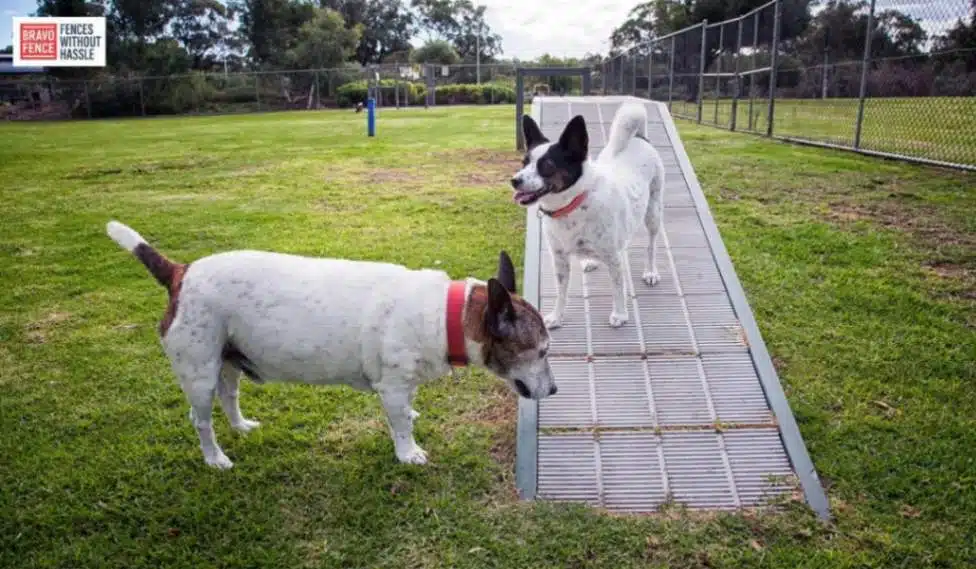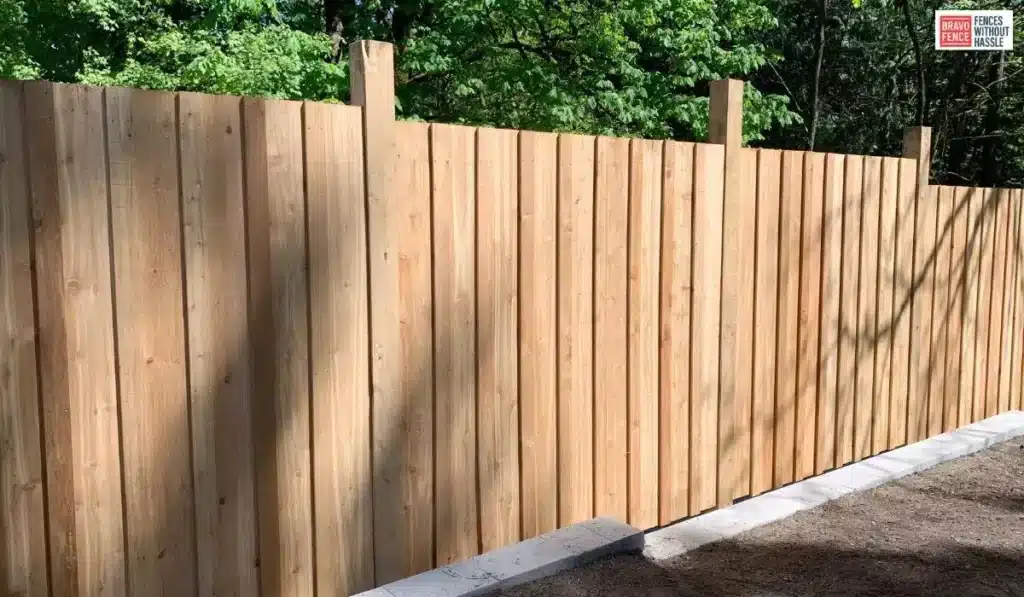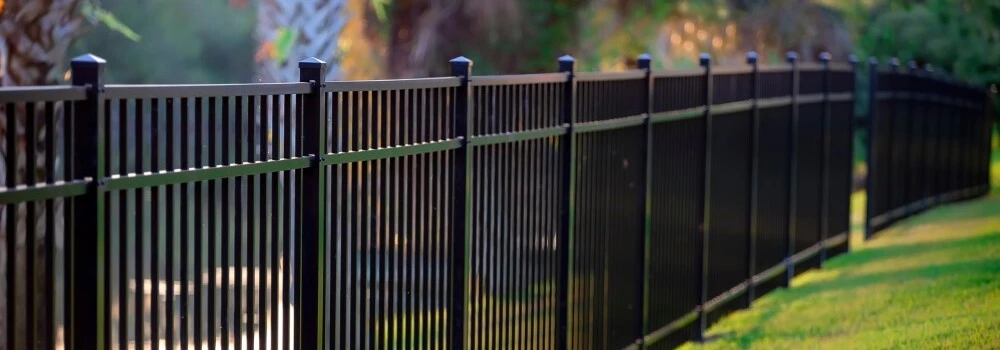
How to Choose the Best Fence Material for Dogs by Breed
As a proud pet owner, your dog’s safety and happiness are likely at the top of your priority list.
One crucial factor in ensuring both is choosing the right fence.
But did you know that not all fences are created equal?
Different dog breeds have unique traits, sizes, and temperaments that make some fencing materials more suitable than others.
Whether you have a feisty Jack Russell or a gentle Great Dane, selecting the best dog fence material can make all the difference.
Let’s explore how to match your furry friend’s needs with the perfect fencing solution!
Why Choose the Right Fence for Your Dog
Choosing the right fence for your dog is crucial for their safety and well-being.
A proper barrier not only keeps them contained but also protects them from potential dangers outside, such as traffic or aggressive animals.
Moreover, a suitable fence enhances your peace of mind.
Knowing that your furry friend can play freely within a secure environment allows you to relax while they enjoy the outdoors.
Your dog’s happiness depends significantly on having a safe space to roam without constant supervision or worry about escape routes.
Different Fence Materials Suitable for Various Dog Breeds
Choosing the right fence material can greatly affect your dog’s safety and happiness.
Traditional wood fences offer a sturdy barrier for medium to large breeds, but they might not deter enthusiastic diggers or jumpers.
Vinyl fences provide a low-maintenance option that is both durable and visually appealing.
They work well for most dog sizes and require less upkeep than wood.
For strong dogs prone to escape, chain-link fences are often ideal because of their strength and visibility, allowing them to see outside without feeling trapped.
Traditional Wood Fences

Traditional wood fences offer a classic look that many pet owners appreciate.
They provide a sturdy barrier, making them suitable for various dog breeds.
The natural aesthetics blend well with most landscapes, enhancing the overall appeal of your yard.
However, wood requires regular maintenance to prevent rot and weathering.
It’s essential to choose high-quality materials and apply protective stains or sealants.
For energetic dogs who love to dig or jump, wooden fences should be tall enough to keep them secure while maintaining an inviting atmosphere in your outdoor space.
Dog-Friendly Vinyl Fences
Vinyl fences are a popular choice among pet owners, thanks to their durability and low maintenance.
They can withstand harsh weather conditions without warping or fading, making them ideal for long-term use.
This material also comes in various colors and styles, allowing you to match your home’s aesthetic.
For dog breeds that like to dig or jump, vinyl offers solid protection.
Its smooth surface prevents injuries while keeping escape artists contained.
Plus, with no sharp edges or nails exposed, you can rest easy knowing your furry friend is safe during playtime.
Chain-Link Fences
Chain-link fences are a popular choice for many dog owners.
They are durable, affordable, and provide great visibility.
This type of fence allows you to keep an eye on your furry friend while they enjoy the outdoors.
However, chain-link fences may not be suitable for all breeds.
Smaller dogs can easily squeeze through gaps, while larger or more energetic breeds might jump over them.
If you have a particularly adventurous pup, consider adding additional heights or barriers to ensure their safety and security in your yard.
Factors to Consider When Matching Fence Material to Dog Breed
When choosing the best dog fence material, consider your dog’s size and breed.
Larger breeds like Great Danes or Rottweilers need sturdy fences that can withstand their strength.
Smaller breeds may require less robust materials but still benefit from secure options to prevent escape.
Dog behavior also plays a critical role in this decision.
Energetic dogs tend to jump or dig, making tall wood or vinyl fences ideal for containment.
On the other hand, calmer breeds might do well with chain-link fences that provide visibility without compromising security.
Dog’s Size and Breed
When choosing the best dog fence material, a dog’s size and breed play crucial roles.
Large breeds like Great Danes or Mastiffs require sturdier fences to withstand their strength.
They might easily push through weaker materials.
On the other hand, smaller dogs such as Chihuahuas need different considerations.
While they may not escape by sheer force, their agility could allow them to slip through gaps in certain types of fencing.
Understanding these traits helps ensure you choose a fence that suits your pet’s specific needs while keeping them safe and secure at home.
Dog’s Behavior and Temperament
Understanding your dog’s behavior and temperament is crucial when choosing the best dog fence material.
Some breeds are naturally more curious or energetic, while others may be calm and reserved.
High-energy dogs like Border Collies need a sturdy barrier to prevent escapes during playtime.
On the other hand, timid breeds may benefit from fences that provide a sense of security without overwhelming them visually.
Assessing how your dog interacts with their environment will help you select a fence that suits their personality and keeps them safe at home.
Considering Aesthetic Preferences
A fence isn’t just a barrier; it’s part of your home’s aesthetic.
Choosing the right material can enhance your property’s curb appeal while providing safety for your dog.
Consider how different materials blend with your home’s style, whether modern or rustic.
Think about color and texture, too.
A sleek vinyl fence may suit a contemporary look, while traditional wood offers warmth and charm.
Your choice will reflect not only functionality but also personal taste, creating an inviting environment for you and your furry friend.
Tips for Choosing the Ideal Fence Material for Your Dog
When selecting the best dog fence material, start by assessing your dog’s specific needs.
Consider their breed, size, and energy levels.
High-energy dogs may require taller fences to prevent escapes.
Think about durability and maintenance, too.
Materials like vinyl can withstand chewing while requiring minimal upkeep.
If aesthetics matter, weigh how each option complements your home’s exterior.
Take into account local regulations and neighborhood norms regarding fencing—compliance is essential for a smooth installation process.
Conclusion
Choosing the right fence material for your dog is crucial in ensuring their safety and happiness.
Every breed has unique characteristics that can influence which fencing options will work best.
By assessing factors like size, behavior, and your personal aesthetic preferences, you can find a solution that fits both your dog’s needs and your home’s style.
Whether you opt for traditional wood, durable vinyl, or practical chain-link fences, each option has its merits depending on the specifics of your canine companion.
Take time to evaluate what works best for them while considering maintenance requirements and budget constraints.
Making an informed choice means more peace of mind as you watch your furry friend play freely within a secure environment tailored just for them.
Enjoy the journey of finding the ideal dog fence material!
FAQs
What type of fence is best for large dog breeds?
Large breeds, such as Great Danes and Rottweilers, require sturdy fences that can withstand their strength. Wood or vinyl fences, ideally over six feet tall, are often the best options. These materials can prevent pushing through or jumping over, ensuring your dog remains secure.
Are chain-link fences suitable for smaller dogs?
Chain-link fences can be less effective for smaller breeds, such as Chihuahuas or Dachshunds, due to the gaps between the links. These dogs can squeeze through or dig under the fence. If you choose chain-link, consider adding a solid barrier at the bottom or opting for a fence with smaller openings.
How do I determine the right height for my dog’s fence?
The ideal fence height depends on your dog’s jumping ability, for breeds known for their leaping skills, like Border Collies or Jack Russells, a height of at least six feet is recommended. For less active breeds, a shorter fence may suffice. Always consider your dog’s unique traits when deciding.
What maintenance is required for wood fences?
Wood fences require regular maintenance to prevent rot, weathering, and insect damage. This includes applying protective stains or sealants every few years and checking for loose boards or nails. If your dog is a digger or jumper, ensure the fence remains secure and intact to avoid any escape attempts.
Can I combine different fence types for my dog?
Yes, combining different fence types can be an effective strategy. For example, you might use a wood or vinyl fence around the perimeter for security, then use a chain-link section to provide visibility. Just ensure that all parts of the fence are secure and complement each other to create a safe environment for your dog.
Tags: Complete Guide to Home Improvement, Complete Guide to Secure Fencing, Everything You Need to Know About Pet Friendly Fencing, Inspiration and Tips on Fence Materials, Top Ideas and Insights About Fencing Solutions

